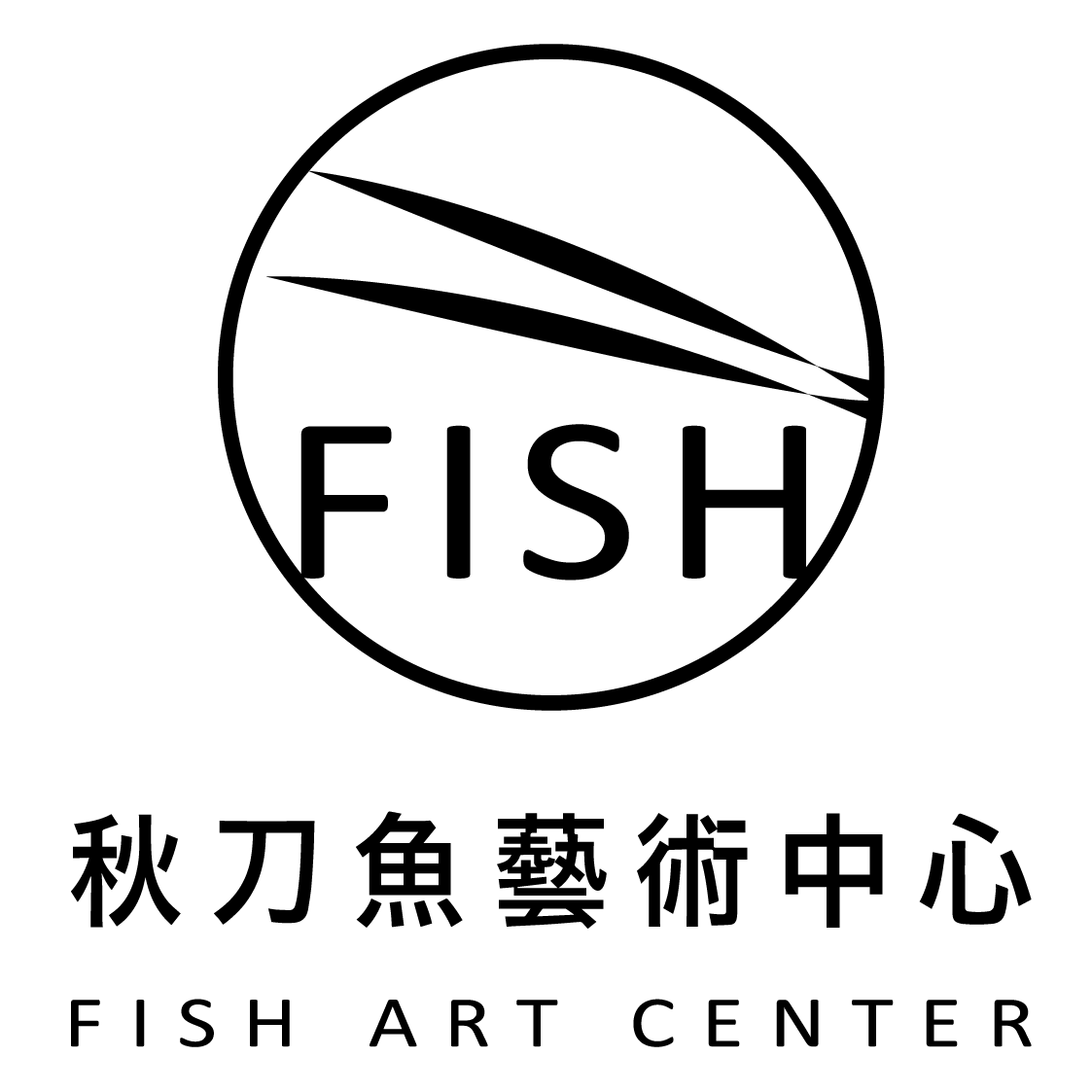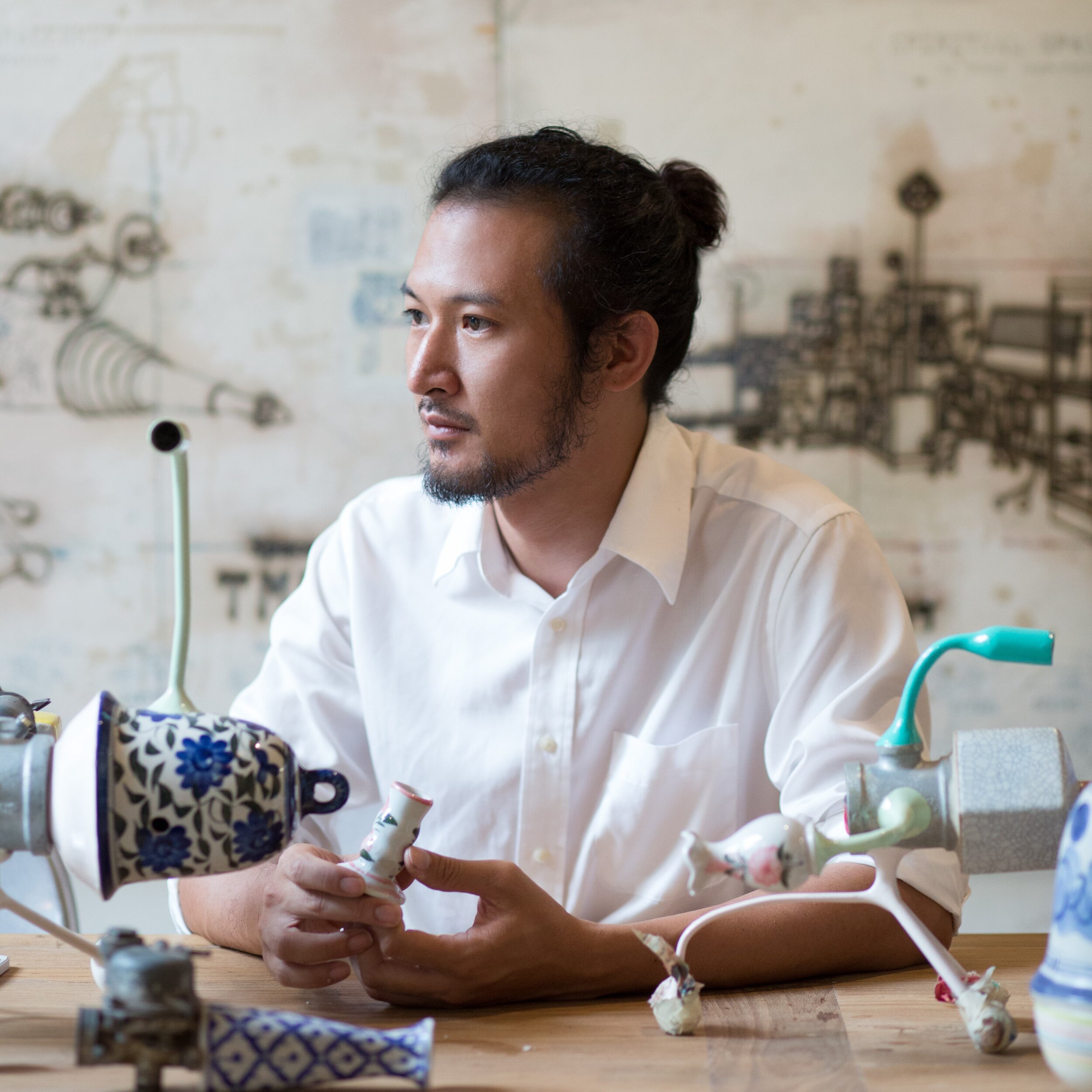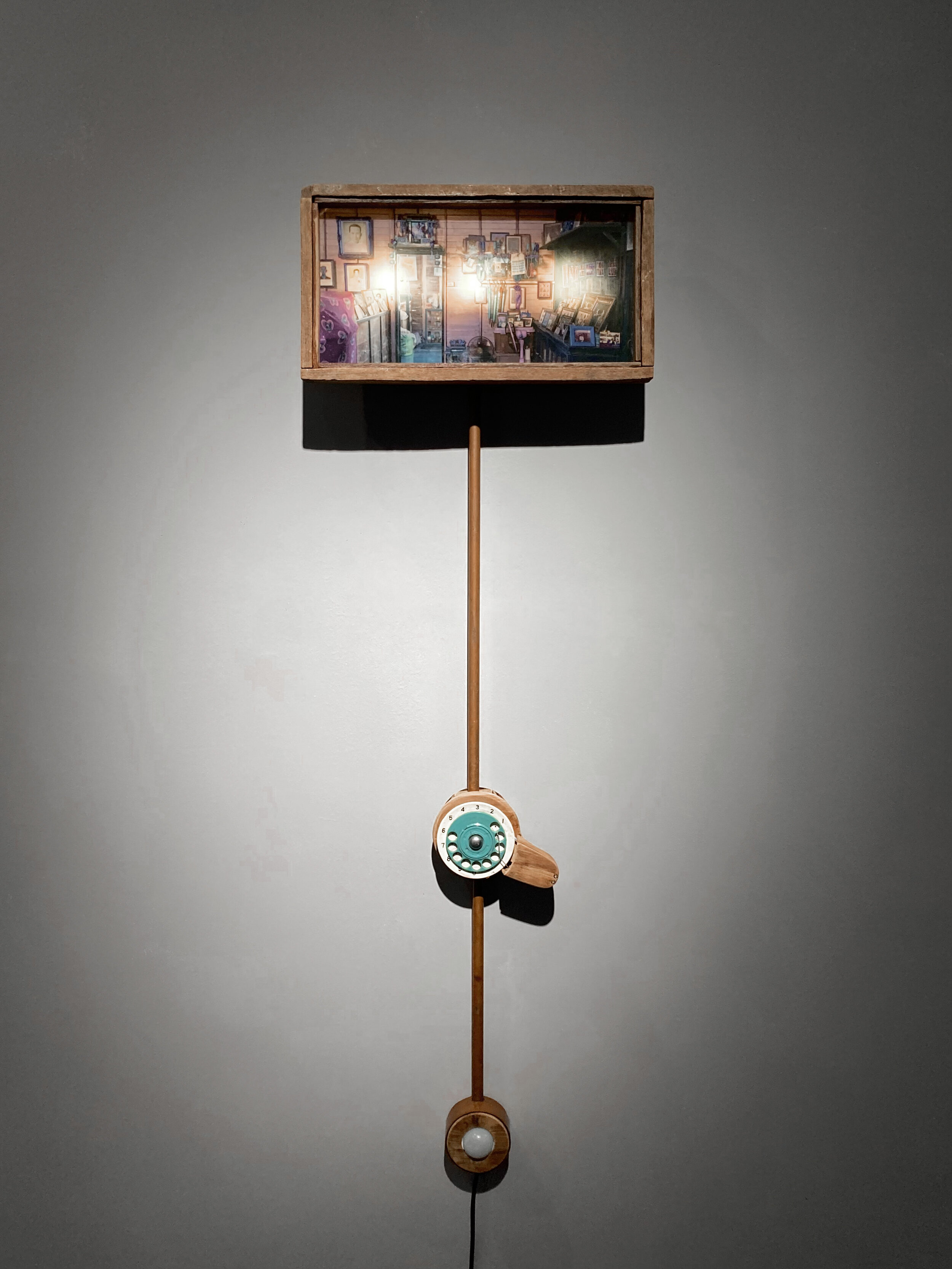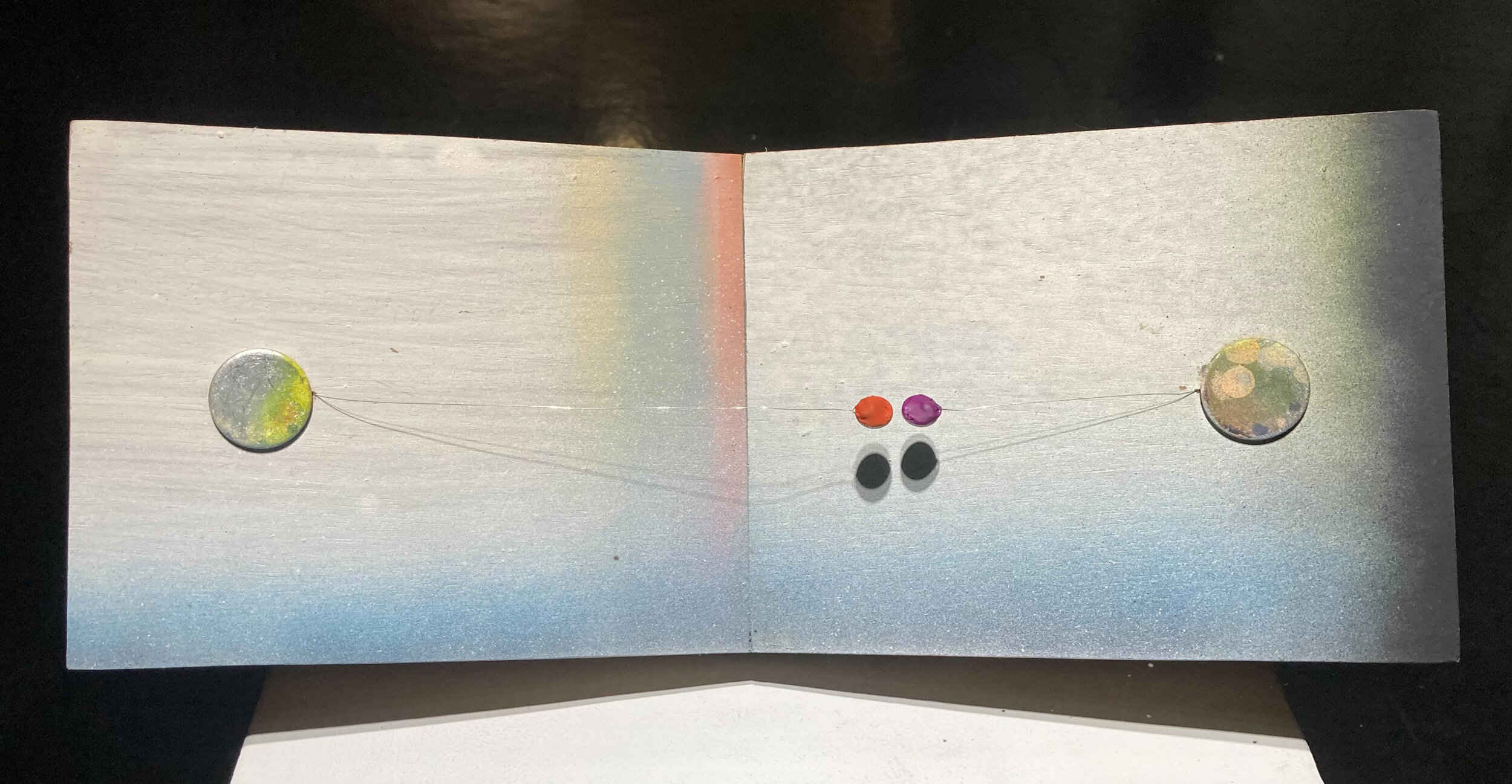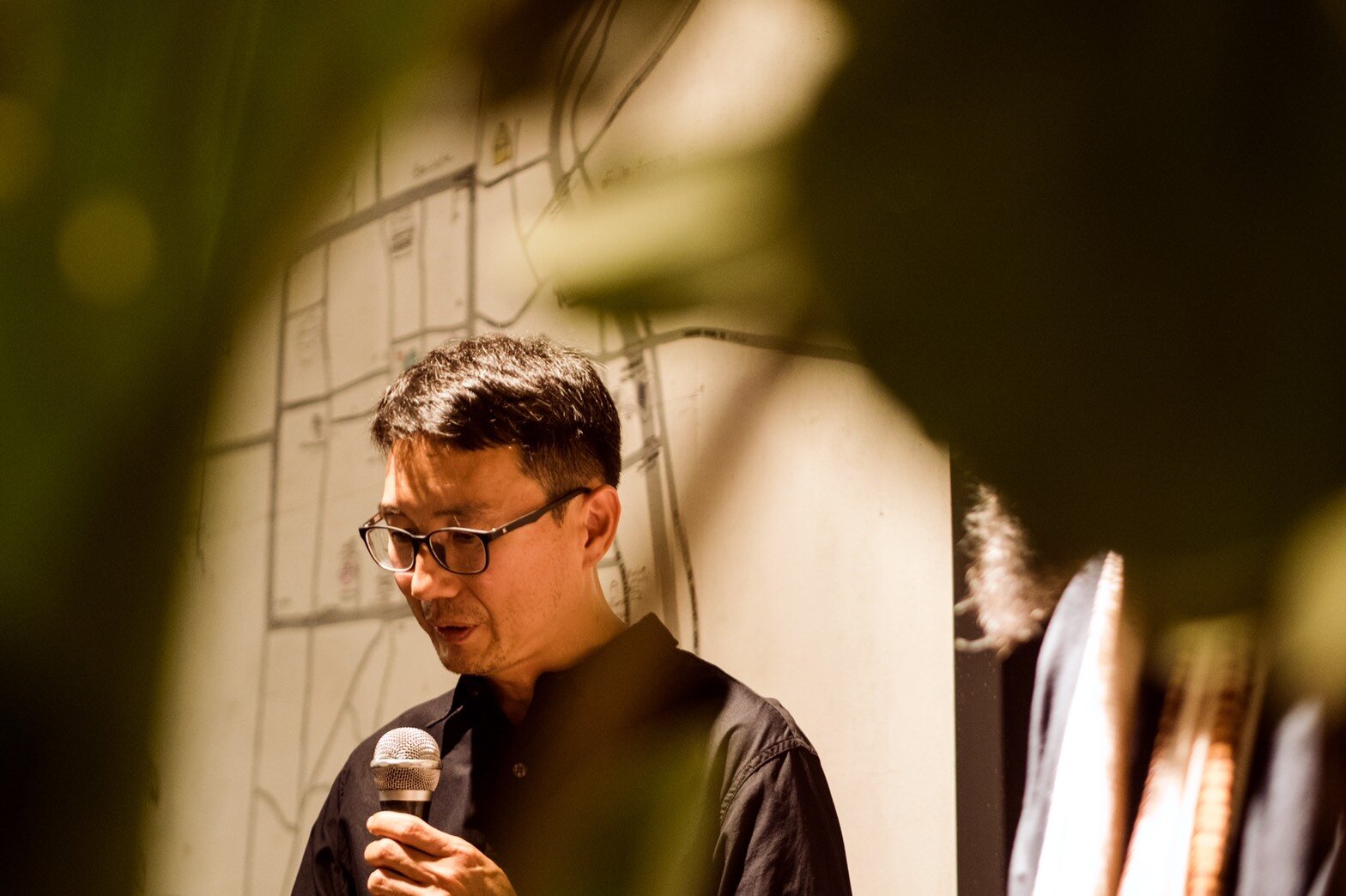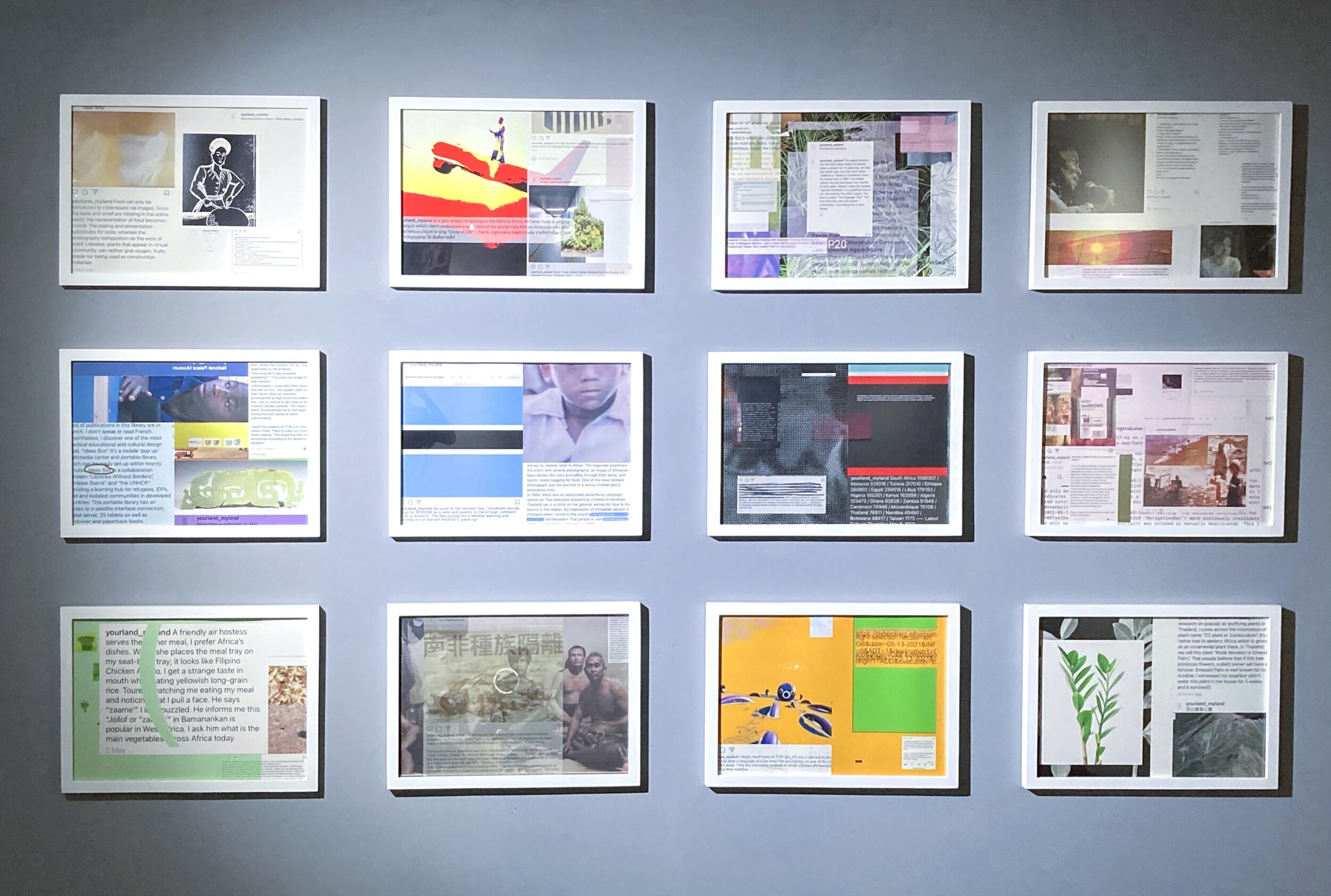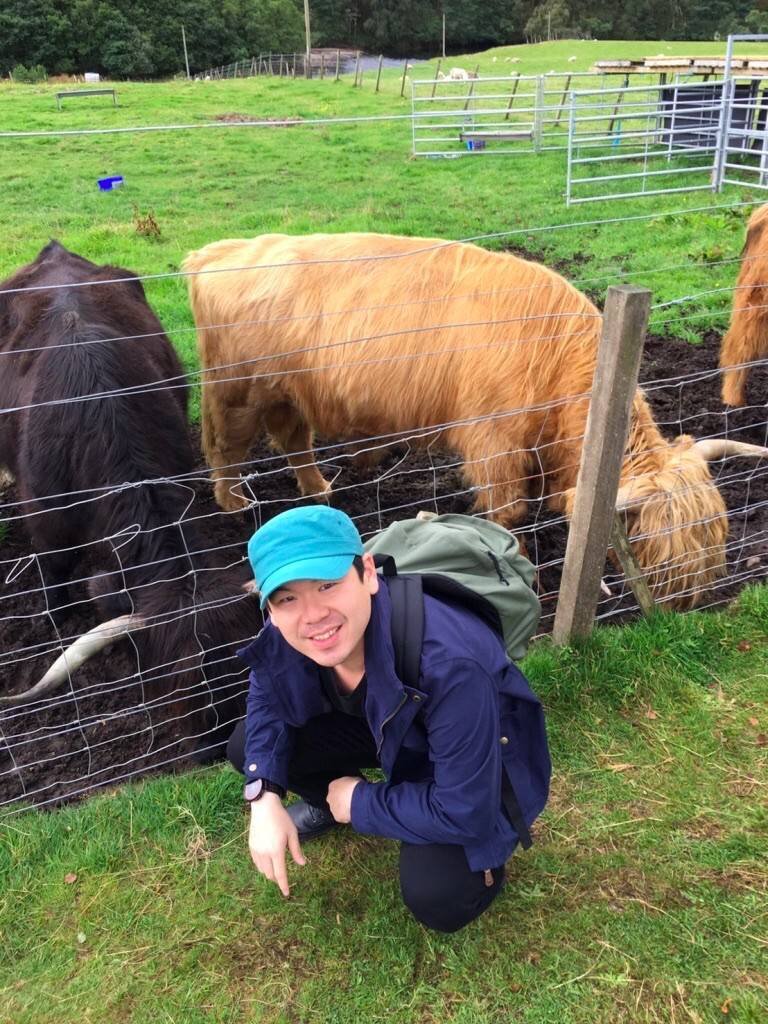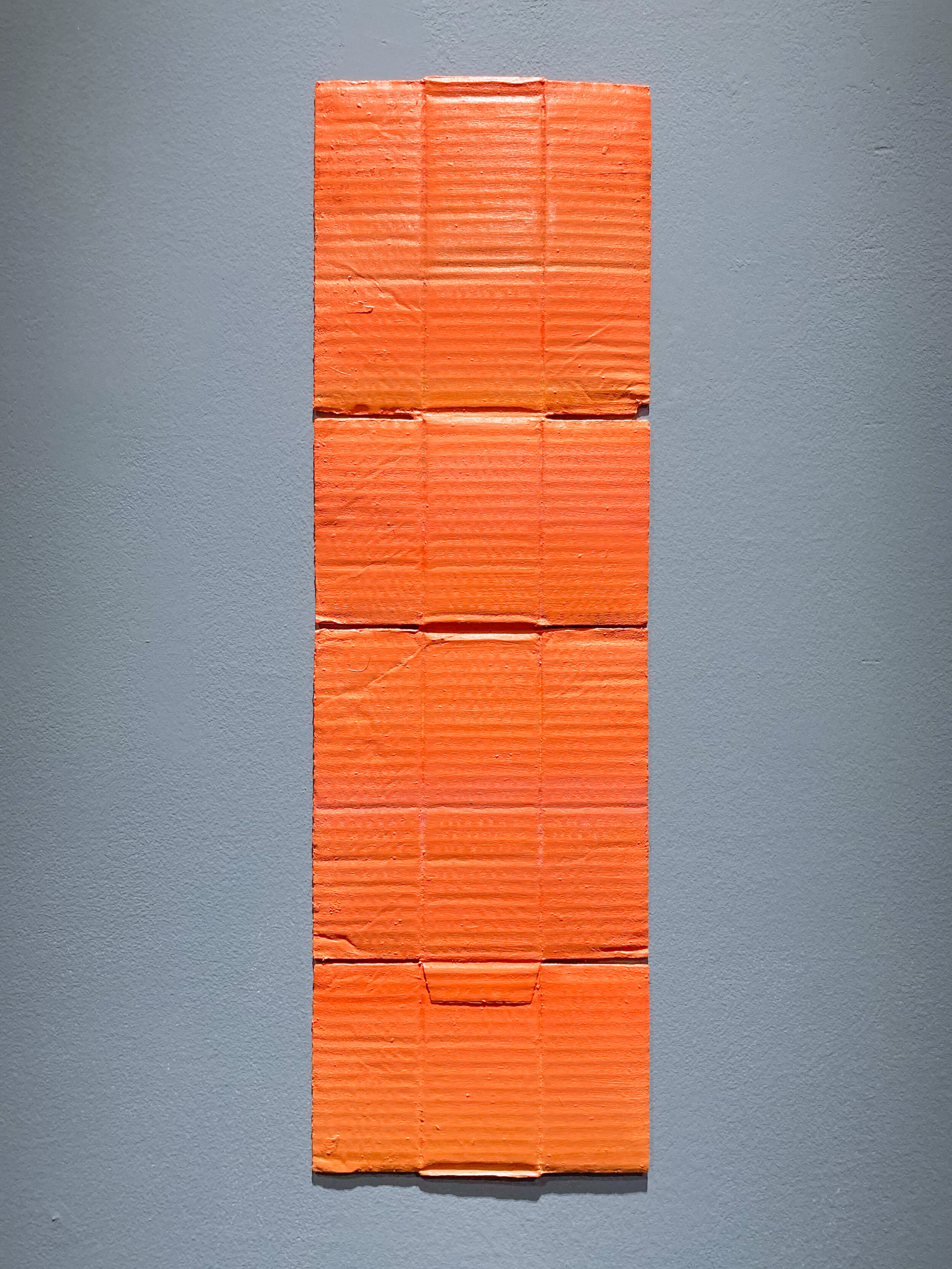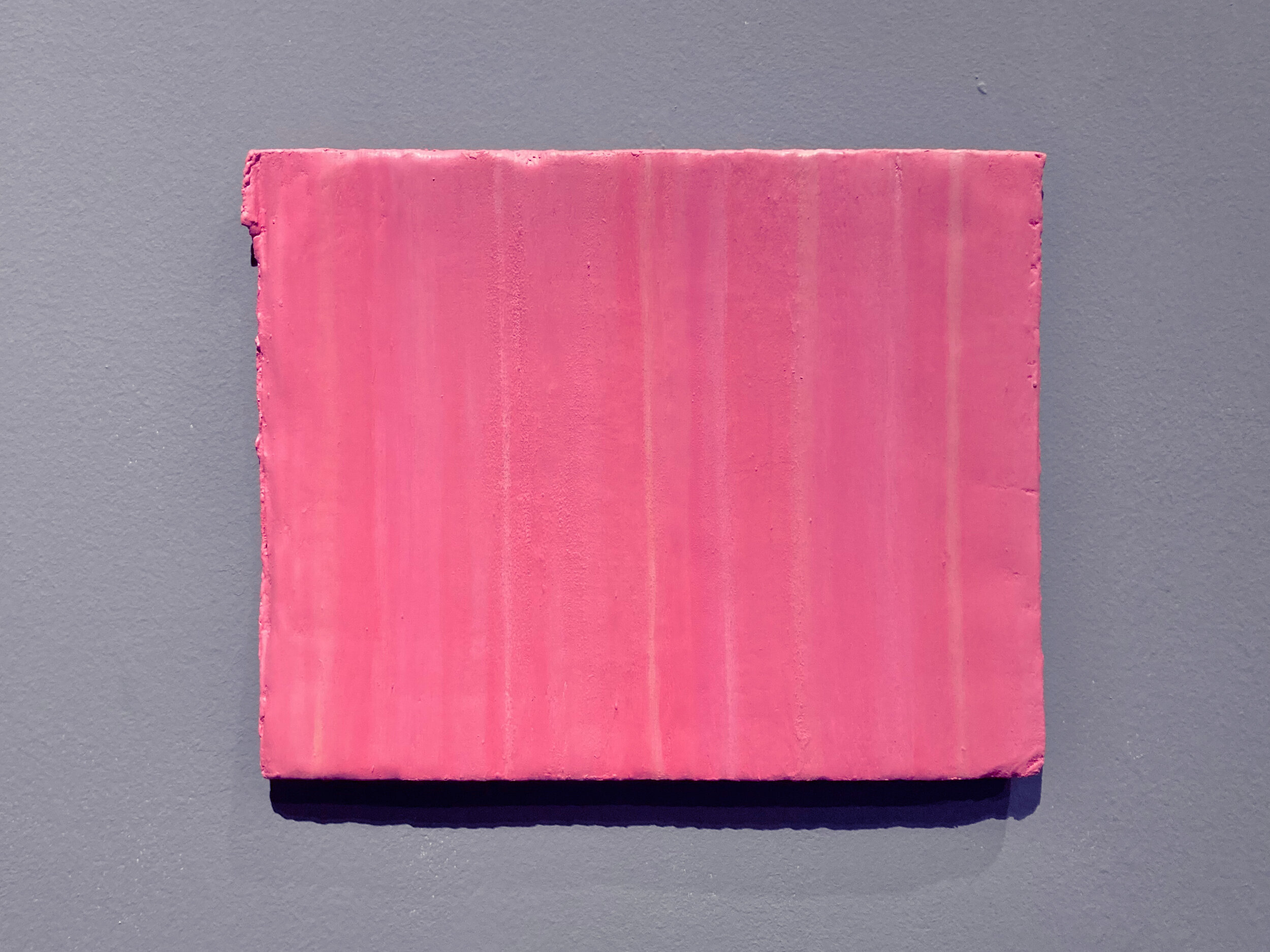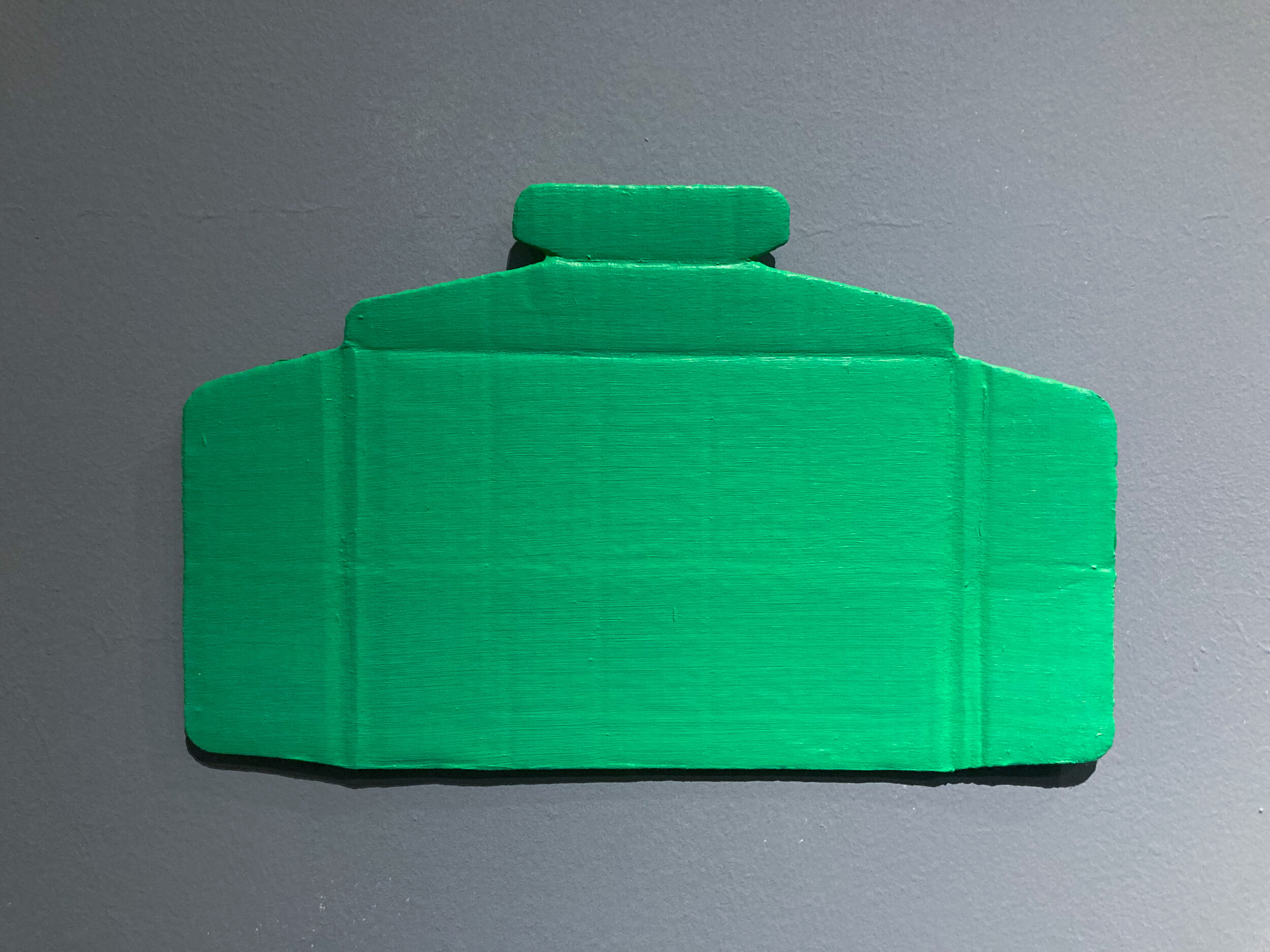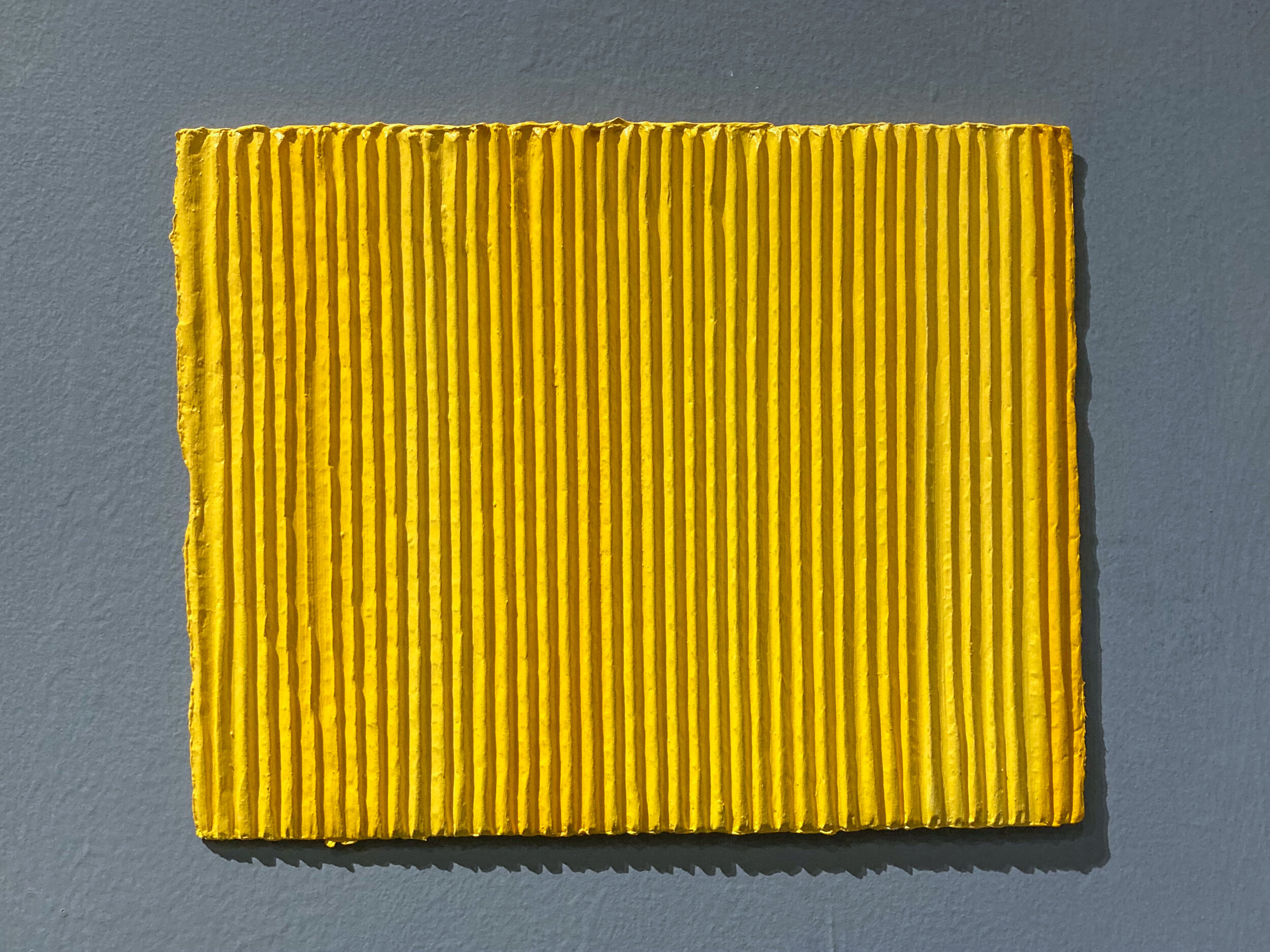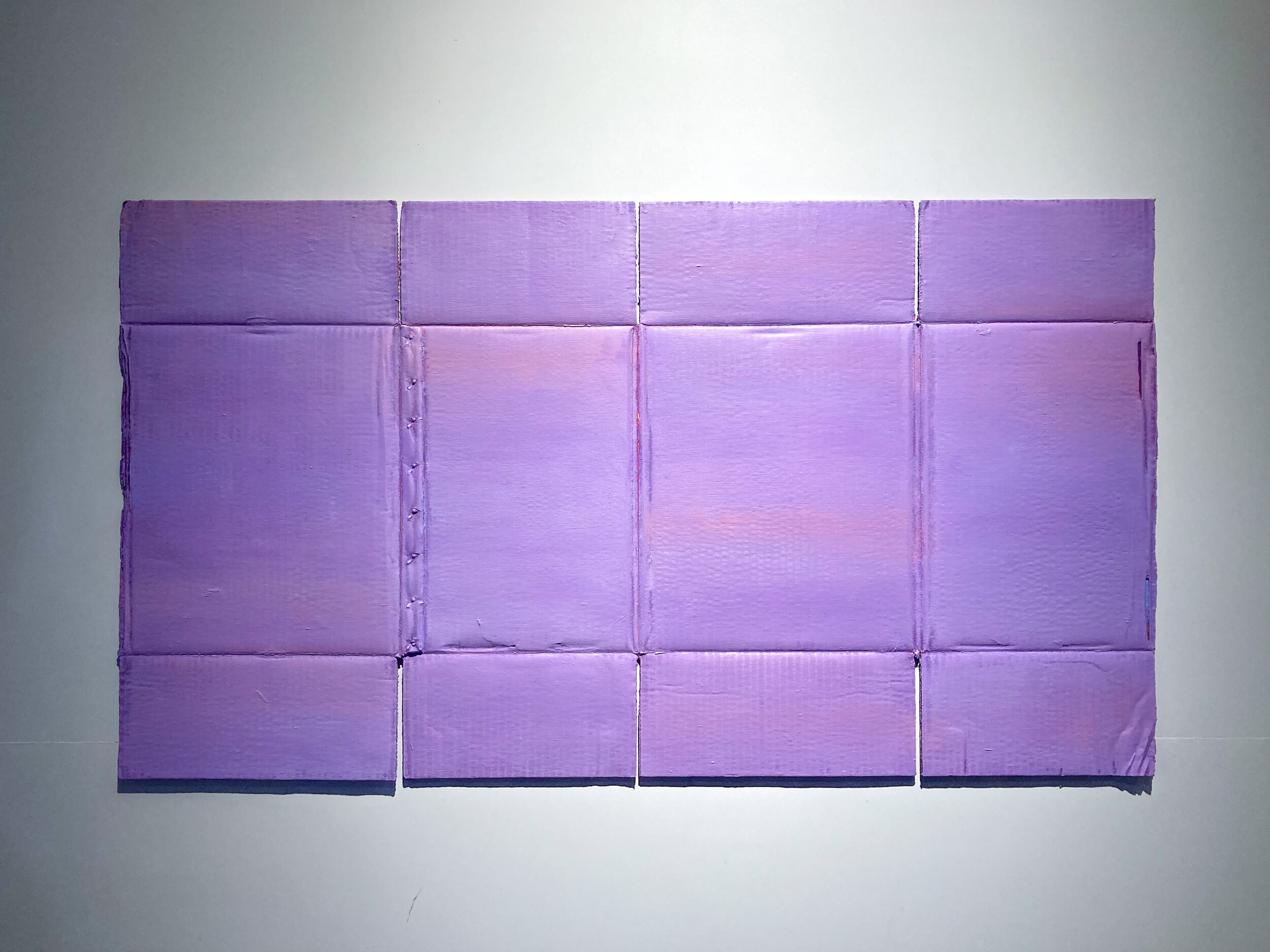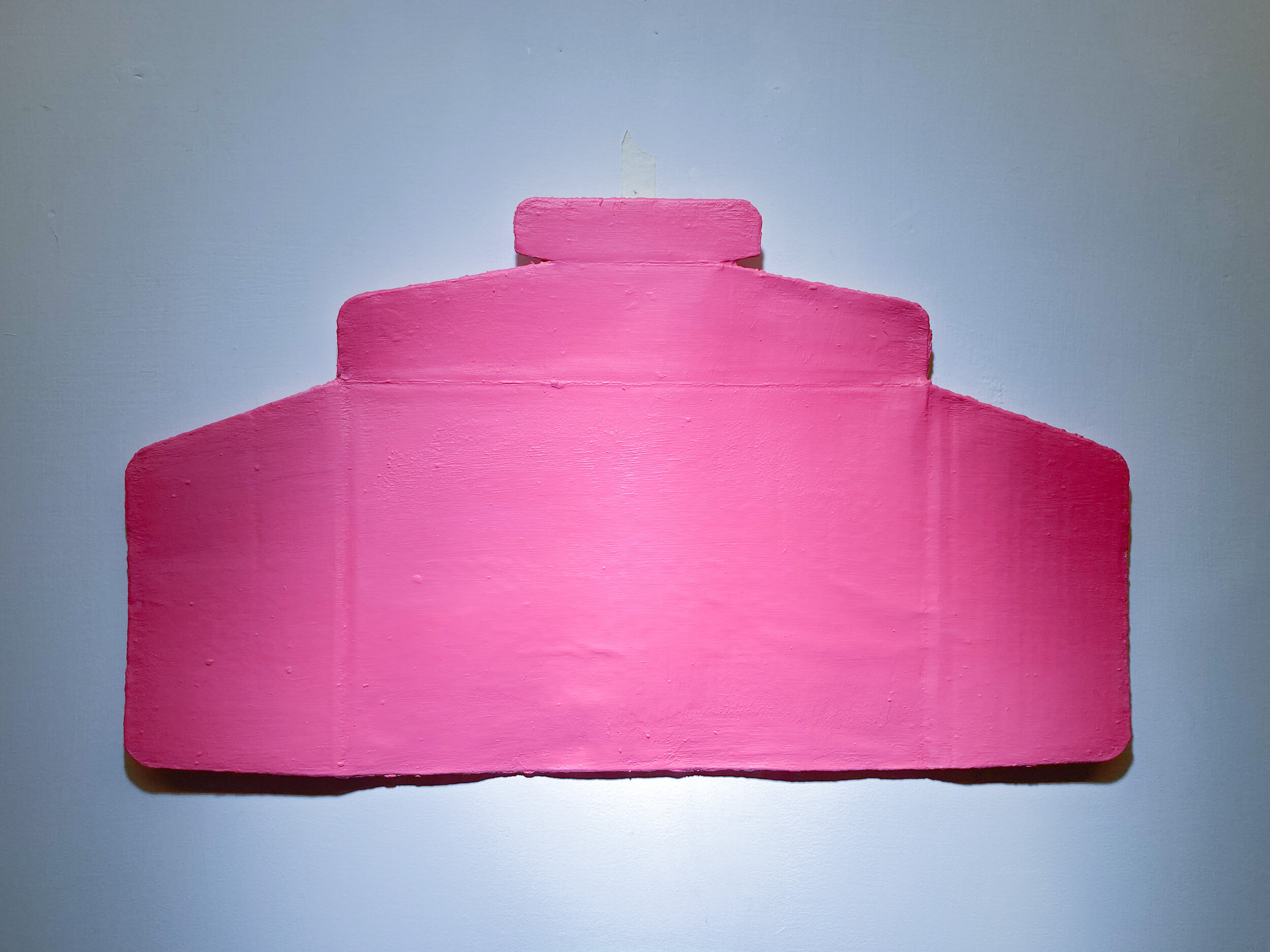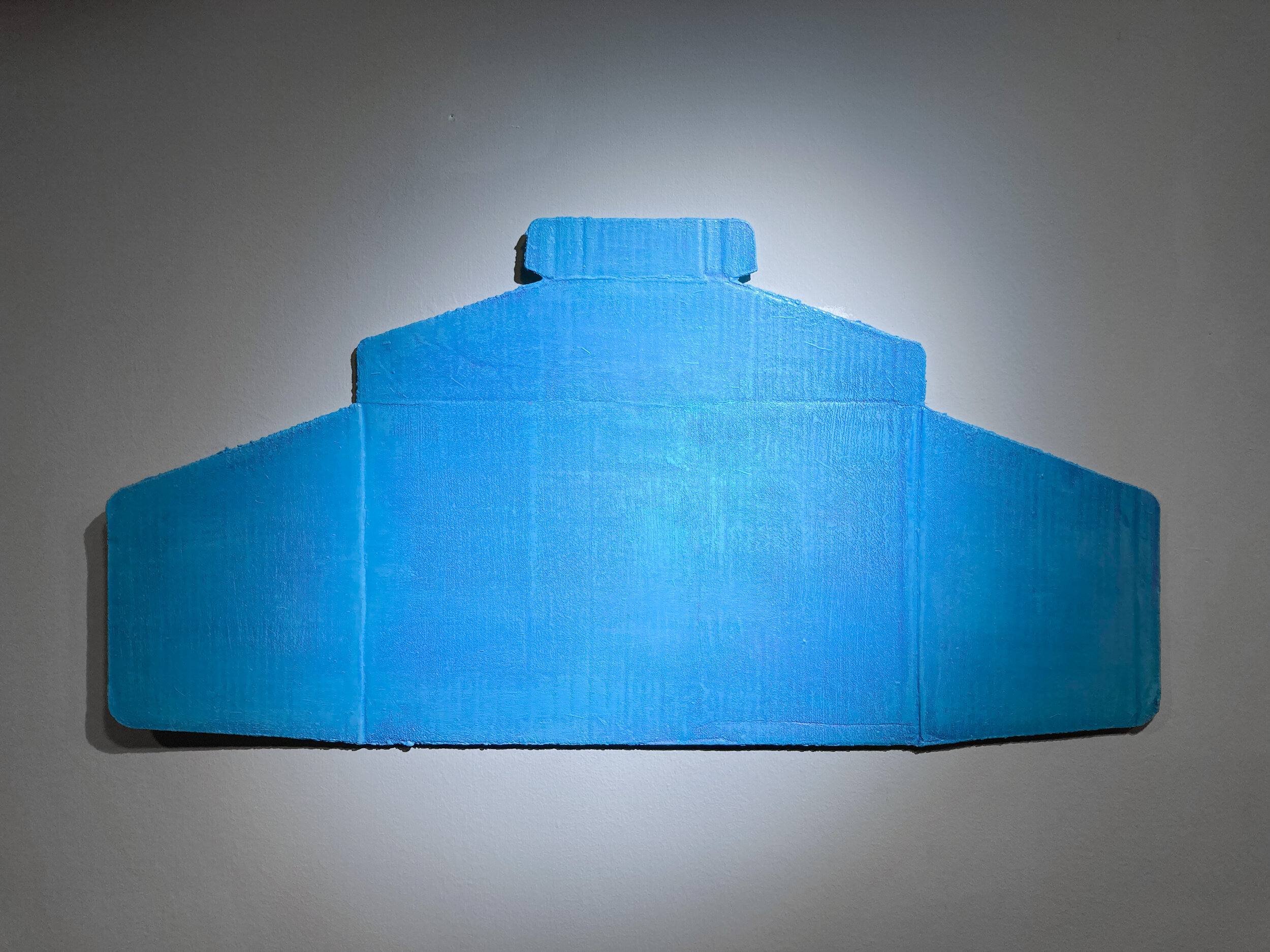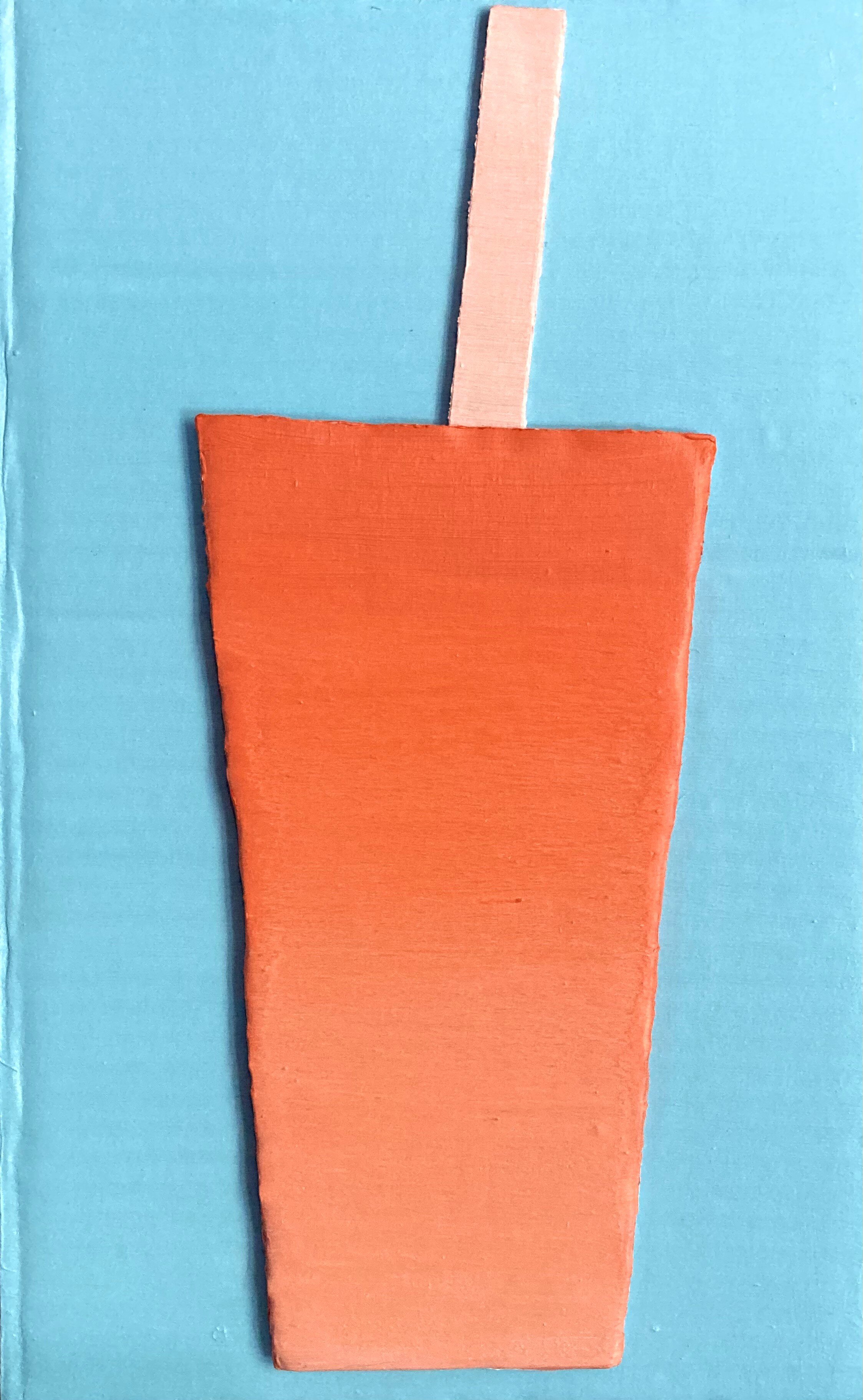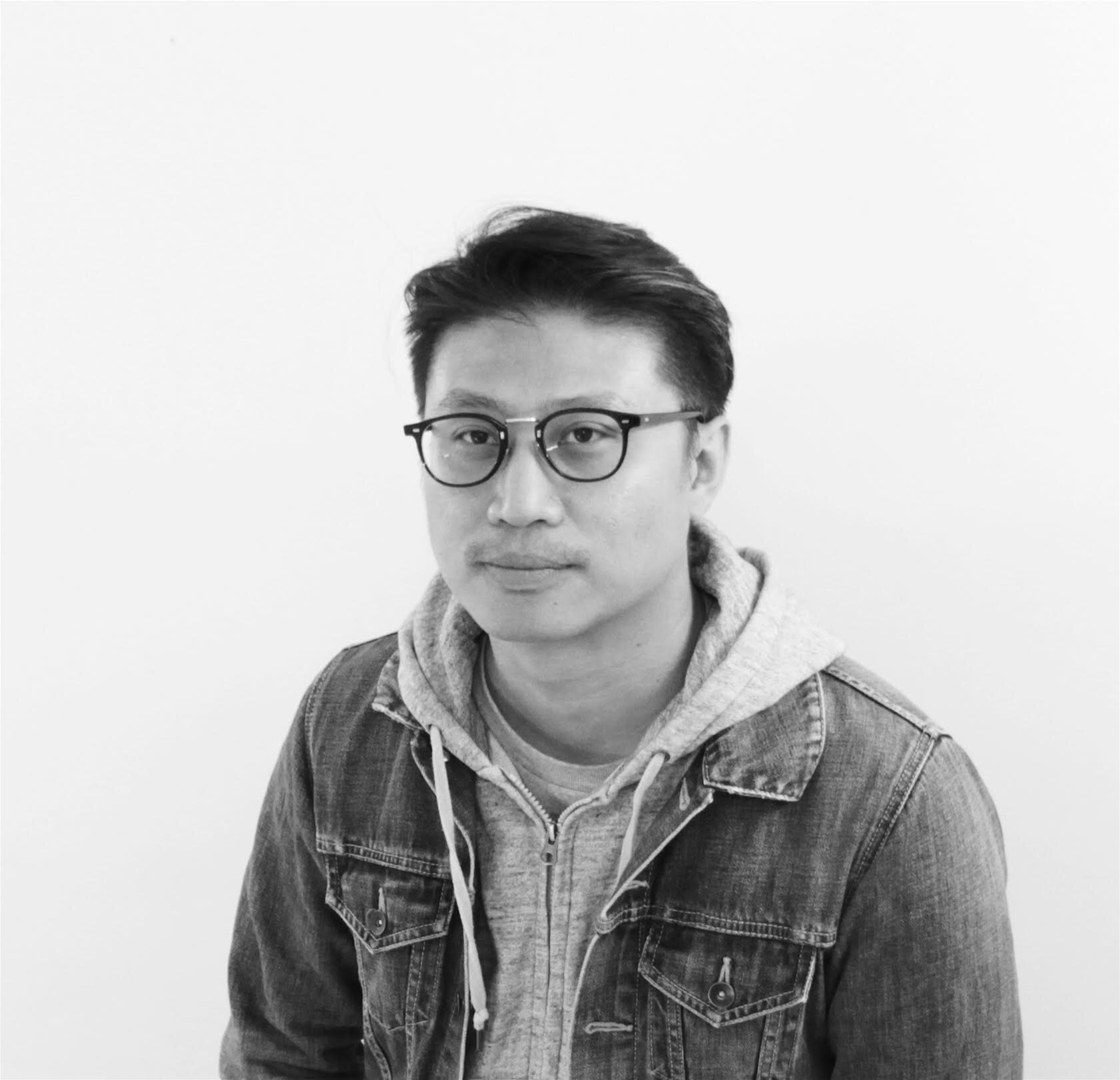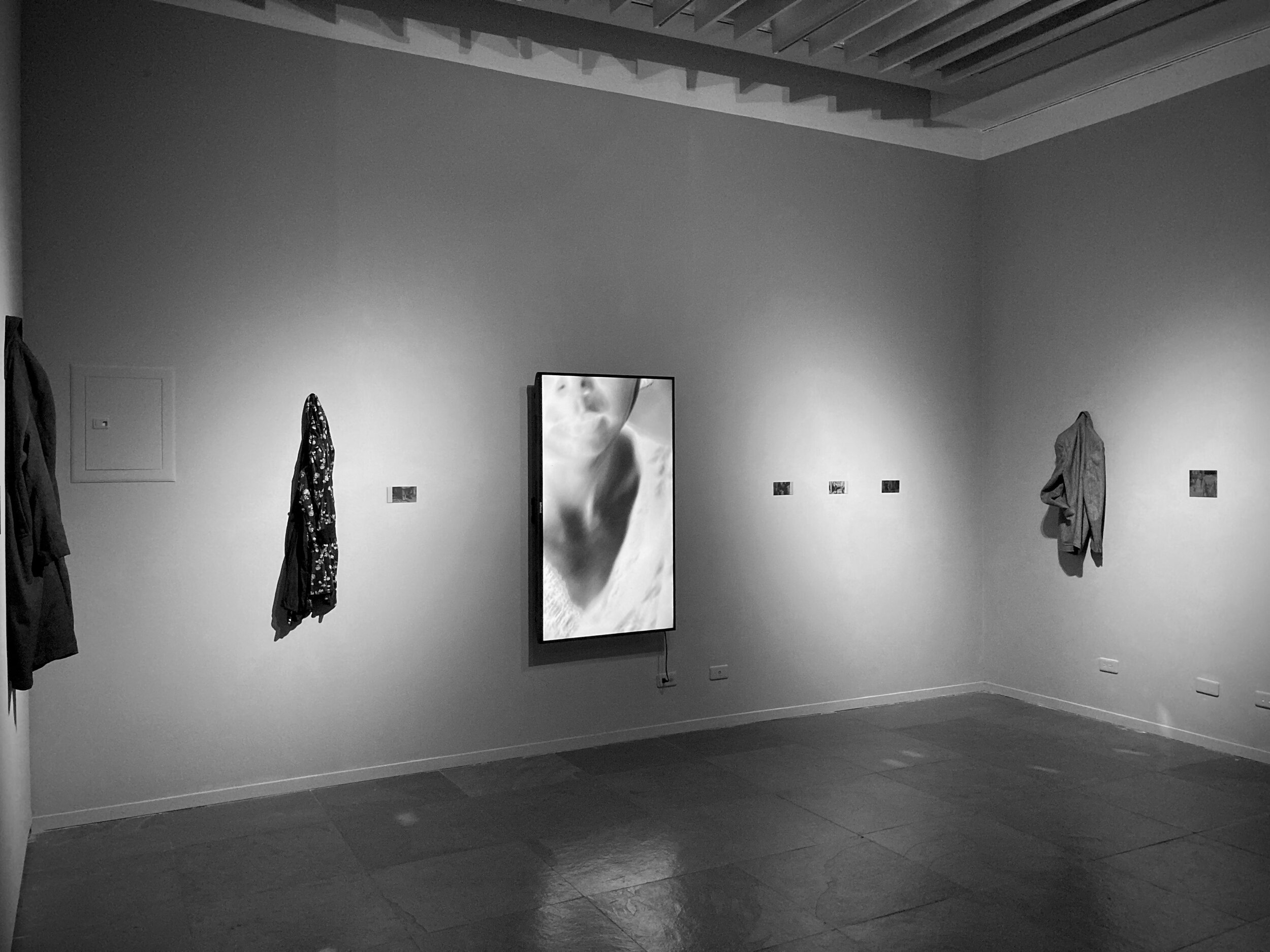參展藝術家:丁昶文 Ting Chaong-Wen、妥拉.拉嘉稜索 Torlarp Larpjaroensook、吉薩達.唐特拉庫勒翁 Jedsada Tangtrakulwong、蘇帕彭.拉提布拉西里 Supapong Laodheerasiri
本次展覽為「BOBA Project 當代藝術國際交流計畫——台泰篇」台灣與泰國兩地共四位藝術家雙邊線上駐村之成果聯展。交流是為了更瞭解彼此並建立連結,然而,面對日益險峻的Covid-19疫情,實體的跨國藝術交流也難以推進,線上交流成為了我們與遠方建立連結的替代方案之一。
This exhibition is the result of a bilateral Online-Artist-in-Residency program between four artists from Taiwan and Thailand for the “BOBA Project–International Exchange in Contemporary Art–Taiwan and Thailand“. However, in the face of the increasingly dangerous Covid-19 pandemic, physical cross-country art exchanges have become difficult to execute. Therefore, online exchanges have become one of the alternatives for us to establish links with distant places.
Cloud computing has become the center of the world. By clicking on a series of seemingly meaningless codes, generated by video tools, the signals lead us across WiFi lines, across submarine communication optical fibre and into the Cloud, where we can safely meet “face to face“, and send our warm regards to the artist friends from afar.
雲端線上成為了世界的中心,透過點擊一串由視訊工具所生成、看似無意義的亂碼所構成的網址,訊號帶領我們穿越wifi線路、橫越海底光纖、直達雲端,我們在雲端上得以安全地「面對面」,關照遠方新認識的藝術家朋友。展覽名稱「/疫同on_AIR」穿插著些許特殊符號,象徵性地模仿了視訊會議連結網址的結構,如同邀請觀者在疫情當前能一同參與的邀請函、鑰匙。「on AIR」除了有展覽放送中的含義外,「AIR」亦是本次主軸「Artist-in-Residency」(藝術家進駐)的縮寫。在為期一個月的駐村期間,每個禮拜透過天南地北主題式的線上聊天會,我們從台泰的傳統習俗、當代藝術、環境議題、電影到在地聲響等不同切片相互分享、交流討論,並導覽了各自的工作室,甚至線上遊覽了清邁的大型二手市集,從二手商品中一探泰國複雜的社會與歷史遷移。
The exhibition title “/Pandemicship_on_AIR“ is interwoven with special symbols, symbolically mimicking the structure of a video conference link, as an invitation and key to join the audience to our exhibition during the current Covid-19 pandemic. “On AIR“ gives a sense of exhibition is live streaming. “AIR“ is also the abbreviation of the main theme of the exhibition––Artist-in-Residency. Throughout the month-long residency, each week we shared and discussed different aspects of Tai-Thai traditions and customs, contemporary art, environmental issues, film and local sounds through thematic online chats, guided tours of our studios and even visited a large second-hand market in Chiang Mai, exploring the complex social and historical transitions of Thailand through second-hand goods.
因應疫情更爆發性成長的數位工作模式與物流網,使各式各樣虛擬與實體「流動」的量與速度不斷增加,當代快速的「流動」堆疊了隱藏在每個「物」(無論是虛擬的資料、實體存在的物件)背後的「個物史」,卻也因過於快速而易如流水般稍縱即逝,這樣的流動雖因此增加了不穩定性所產生的斷裂,相反地也使物有更多的想像空間,在流動過程中所產生的訊息、殘餘物,藝術家從中拾起、加以探索,透過藝術家如同「收藏」的揀選,藝術家賦予收藏品新的敘事情境與想像,添寫了「個物史」,並流動到觀眾眼前,流動到觀眾的感知與記憶之中。
In response to the explosive growth of the pandemic, digital work patterns and logistics networks have increased the volume and speed of all kinds of virtual and physical “liquid flow“. The speedy “liquid flow“ has piled up the “histories of individual objects“ hidden behind each “object“ (be it virtual data or physically existing objects), but the state of high speed makes these liquid flows easily become fleeting water. While such a flow increases the fracture caused by instability, it also leaves more room for the imagination of the objects. Artists pick the messages and residuals produced during the liquid flow, and explore them further. Through a similar process like selecting their own “collection“, the artist gives these objects a new narrative and imagination, adding new “histories of individual objects“ into them, letting them flow into the viewer’s eyes, and into the viewer’s perception and memory.
妥拉.拉嘉稜索 (b. 1977)生於泰國,是一位跨領域藝術家,其創作媒材包括繪畫、雕塑、複合媒材裝置,以及互動藝術。他的藝術實踐旨在創造大眾與當代藝術之間的連結,於2008年在清邁創立了Gallery Seescape藝廊兼咖啡店,讓藝術能夠與更廣泛的觀眾互動,並且融入人們的日常生活。他的作品曾在世界各地展出,包括新加坡美術館、日本橫濱黃金町藝術市集、澳洲雪梨SNO當代藝術計畫,以及首屆曼谷藝術雙年展。他目前在泰國清邁生活與工作。
Born on December 9th, 1977, he was raised in a houseboat in Ayutthaya. Living in Chiang Mai since he graduated a Bachelor degree.
Torlarp Larpjaroensook is a multidisciplinary artist who is interested in the integration of various techniques; painting, sculpture, installation and interactive art to connect art to wider audience. In 2008, he established Gallery Seescape (alternative art space) in Chiang Mai.
作品介紹:
相互溝通––在這越加趨近數位化的世界中也越顯得重要,這類科技的進步已經徹底改變了我們彼此互動的方式。這是有史以來,人類最能夠輕易同步得知世界各地資訊的時刻,但我不禁想問,這種高速和無線的生活方式是否真的能滿足我們所有的需求。
回憶幾年前,我仍然記得以前我得背起家用電話的號碼、我父母的電話號碼,甚至是我所愛之人的電話。我是如斯戀慕那些日子,即便這些事物會被視為過時於現代世界的標準。
在這件作品中,我想通過記憶中的物體來展示和紀念我們過去這種獨特的記憶和故事,而其中每個物體都發出連接其它物體「信號」的功能,就像駛過一條記憶之路,串起我生命中每處重要的站口。
Introduction:
As the world becomes increasingly digitized, it brings to light the importance of intercommunication. This technological advancement has revolutionized the way we interact with one another. It is now the easiest it has ever been to connect and keep ourselves in tune with the going-ons around the world. Although, I couldn’t help but wonder if this high-speed and wireless way of life can truly fulfill all of our needs.
Looking back several years, I still remember how I used to memorize my house’s landline, my parents’ digits and even the number of my loved ones. Oh, how I adore those times, even if they might now be deemed inconvenient to the modern world’s standard.
In this piece, it is my intention to showcase and honor this unique memory and story in our past through objects in memory while each object is performing that function of the signals connecting each object to each other. As the same as being the road for the vehicles of memories that come through to each of the important areas that have happened in my life.
藝術家吉薩達 • 唐特拉庫勒翁出生於1972年,泰國曼谷。在馬哈沙拉堪府生活了8年後,於2016年搬至清邁。為了在自己的藝術實踐中學習新的詞彙,吉薩達在每個新的藝術項目中都會嘗試不同於以往的材料。自2005年起,他的創作著重在為不同場地特製裝置藝術,讓作品被展覽空間啟發。
Born in 1972, Bangkok, Thailand. After living in Maha Sarakham for eight years, Jedsada moved to Chiang Mai in 2016. Trying to learn new vocabulary for his artistic practice, Jedsada experimented with new materials whenever he’s assigned a new project. Since 2005, site-specific installation has become the main focus of his work. Most of the installations originate from its exhibition spaces.
作品介紹:
「失物招領」是一個冒險般的藝術計畫,泰國藝術家計畫利用網路資源,試圖在非洲南部波札那國度上的花園/土地上種下台灣和泰國本土植物。探險路上遇見了一系列未知的文化、人和自然資源,有些路徑、方向被改變、改向,似乎寸步難行,卻驚心動魄,這樣掙扎的旅程時不時觸發記憶浮現。雖然網路上的資訊量可以超量負載,一個人的歷史卻是有限的。這個富有想像力的植物計畫似乎看似超現實,但它卻促進了對世界不同地區的生活和文化的認識。
Introduction:
Lost and Found is a project in which a Thai artist attempts to seed native Taiwanese and Thai plants in a garden or a land in Botswana, a country in Southern Africa. This adventure project is planned to be constructed by using online resources. Along the way, unknown cultures, people and nature come across expectedly. Some paths, the directions are shifted and rerouted; stranded but thrilling. From time to time, the struggling journey brings personal memories to the surface. Although the information on the internet may be overloaded, a personal history is limited. This imaginative plant project seems to be surreal; however, it fosters the knowledge of life and cultures in different parts of the world.
蘇帕彭.拉提布拉西里 Supapong Laodheerasiri
蘇帕彭 • 拉提布拉西里於1985年出生於泰國清萊,於2009年從泰國清邁大學美術學院獲得繪畫藝術學士學位,一級榮譽(BFA),並於2018年以優異成績畢業於英國格拉斯哥藝術學院(GSA)美術碩士。蘇帕彭目前是泰國先皇技術學院(KMTL)建築學院美術系的講師。作為一位藝術家,他的藝術作品曾在國內和國際上展出。他的作品處理關於感知、解釋、詮釋的模糊性與理解的問題,並使用各種媒體來創作。
Supapong Laodheerasiri was born in Chiang Rai, Thailand in 1985. He graduated with Bachelor of Fine Arts in Painting (First Class Honours) from Faculty of Fine Arts, Chiang Mai University, Chiang Mai, Thailand in 2009 and graduated with Master of Fine Art with Merit from The Glasgow School of Art, Glasgow, Scotland, United Kingdom in 2018. In addition, he is currently a lecturer at the Department of Fine Arts, Faculty of Architecture, King Mongkutʼs Institute of Technology Landkrabang (KMITL), Bangkok, Thailand. Furthermore, as an artist, his artworks have been exhibited nationally and internationally. He usually uses various mediums to create artworks. Most of his artworks focus on the questions about perceptions, interpretations, ambiguities of meanings and understanding.
我是一個好網購者,所以我努力成為一個好畫家
I Am a Good Online Shopper, So I Try To Be a Good Painter
媒材:壓克力顏料、網購郵寄紙箱、用過的包裝
Medium: Acrylic paint on corrugated fibre board from used parcel post boxes and used packets
年份 Year:2021
作品介紹:
「我是一個好網購者,所以我努力成為一個好畫家」是一個畫作系列,應用郵寄網購商品的紙箱和包裝作為主要媒材。該系列作品指出,對於藝術創作而言,重複使用及低廉的材料都可以是節約的媒材,這當然包括在COVID-19疫情期間快速增長的網購世界,它們可以反映當下的經濟狀況和社會形勢。
Introduction:
I Am a Good Online Shopper, So I Try To Be a Good Painter is a series of paintings, which used corrugated fibre boards from used parcel post boxes and used packets that came from online shopping to be the main material. The series of paintings refers to the use of reused materials or cheap materials in the creation of artworks, which is the frugal creation of artworks. Including, the rapid growth of online shopping during the pandemic of COVID-19. They could reflect the state of the economy and social situations in the present.
目前居住和工作在台南。其作品擅長處理影像及物件等混合媒材的空間裝置,這些作品深受個人經驗啟發,常以現成物置於特定展覽背景下,演變成為特定的歷史敘事。在令人驚訝的創新當中,他嘗試解構、闡釋和重新詮釋著我們共享的歷史,並審視物質文化、歷史衝突、集體記憶和跨境存在等現象及問題。
Artist Chaong-Wen Ting (1979), who graduated from Tainan National University of the Arts in 2006, currently lives and works in Tainan. He specializes in mixed media space installations such as video and objects. His artworks are inspired by personal experience and often evolve into specific historical narratives by placing ready-made objects in the specific exhibition context. In his surprisingly innovative works, Chaong-Wen‘s art attempts to deconstruct, interpret, and re-interpret our shared history, examining our material culture, historical conflicts, collective memory, and phenomena of cross-regional existence and other problems.
作品介紹:
作品《暫時性物證 / Temporary Physical Evidence》以「物質文化」與「時代的圖像」作為考究,從「摩登 (Modern)」作為想像,探討殖⺠現代性在現代生活中的遺緒,以單頻道錄像演繹的「珈琲店」,即是1930 年代「摩登都會女子」形象出現的女給陪侍,加上販賣各式酒類,與現今作為應酬、聲色場所的酒吧功能相似 的空間,閃爍的霓虹透過鏡面的折射,留聲機中流轉出的樂音,情調迷離,符應著近代生活中對於節奏與速度 的追求,「珈琲店」提供異於日常生活的空間,及女給服務的刺激相互影響,構成日殖晚期大眾享樂生活的面 貌,亦延續至今。
就某方面來說,「時代的圖像」也留存於服飾之中,臺灣在1930年代中期,⻄裝、洋裝愈發普遍,洋裁使穿 著者看起來挺拔與精神,服裝作為其自我認同與「摩登」意象相互連結的媒介之一,也呼應了殖⺠者推動現代 教育的成果,不同文化的模仿或移植,經過認識、定義、複製、消化、再生的步驟,往往與原生文化出現程度 上之差異,無論其顯著與否,仍能在瀏覽歷史圖像時被辨識。以玻璃鏡面重製日殖晚期的肖像照,形似乾版底 片,注視同時也映射觀者面容,當照片中的服飾被局部放大處理,顯露了細節卻模糊其年代,作為舊時代思潮 中的「摩登」一詞,則藉物質轉換得以延續,並結合「懷舊」設計的風潮,不斷地被記憶更新。
Introduction:
The work Temporary Physical Evidence investigates "material culture" and "images of the times". Based on an imagination of "modern", it explores the remains of colonial modernity in modern life. "Café" interpreted through a single-channel video features a café waitress in the image of a "modern urban woman" of the 1930s, along with all kinds of alcohol, forming a space with functions similar to those of contemporary bars for social intercourse and nightlife. With the flashing neon light reflected through the mirror, and the music flowing from the phonograph, the sentiment is mesmerizing, echoing the pursuit of rhythm and speed in modern life. "Café" provides a space different from those in daily life, and, along with the interplay with the stimulation from the café waitress’ service, forms an impression of the hedonism in people’s lives in the late Japanese colonization period, which continues to the present.
In a way, the "images of the times" also remains in clothes. In the mid-1930s in Taiwan, suits and dresses became more and more common. Those who wore clothes tailored in Western styles looked upright and spirited. As a self-identity and one of the media linked with "modern" imageries, clothing also corresponded with the achievements of the colonists’ promotion of modern education. Being imitated or transplanted, diverse cultures pass through the steps of recognition, definition, reproduction, digestion and regeneration, and often carry levels of difference from the original cultures. Whether significant or not, such difference can still be perceived when browsing historical images. Portrait photos of the late Japanese colonial period reproduced with glass mirrors resemble dry-plate negatives. Being gazed, they also reflect the visage of the viewer. When the clothes in a photo are partially enlarged, the details are revealed, but the period is blurred. The term "modern" in the trend of thought of a past era is extended through material transformation, and constantly updated by memory through combinations with the “retro” design trend.
